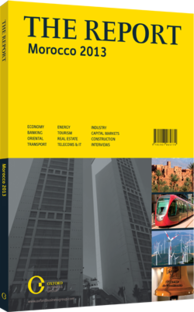Planning for growth: Restructuring the sector to boost production is a key strategic aim
The contribution to GDP by agriculture has declined a total of 1-2% in the last decade, as other sectors expand quickly. While low levels of aggregation, irrigation and mechanisation remain an obstacle, there is considerable room for growth given a temperate climate, available agricultural land and large workforce.
PILLARS: In 2008 the state launched the Green Morocco Plan (Plan Maroc Vert, PMV), which aims to harness the country’s agricultural resources for two goals: to increase agriculture’s value-added through the export of high-value products and to reduce poverty in rural areas. To achieve pillar I some 961 projects are planned by 2020 for a total investment of Dh75bn (€6.7bn). The state aims to provide Dh15bn (€1.33bn), or roughly 20% of pillar I spending, through investment incentives and subsidies disbursed by the Agricultural Development Fund. Pillar I projects is expected to impact a total of approximately 560,000 farmers.
A further 545 projects are planned under pillar II for an investment of Dh20bn (€1.8bn) by 2020, of which 80% of costs are due to be covered by the state. Social projects under pillar II are expected to impact a total of 855,000 small-scale farmers, often in more unfavourable agricultural zones such as the mountains and semi-arid plains. Combined with a handful of nonaligned projects and administrative costs, the PMV strategy will require an investment of some Dh147bn (€13.1bn) between 2010 and 2020, three-quarters of which is expected to come from the private sector.
SECTOR ORGANISATION: To oversee the implementation of this ambitious strategy, the state created an Agency for Agricultural Development (Agence pour le Développement Agricole, ADA) in 2009. The ADA has a multi-purpose remit, including promoting private sector investment among both international and domestic organisations, as well as farmers themselves. Thus far, the ADA has mobilised an estimated 95,000 ha for 534 projects. The fourth phase of the effort began in 2012 and aims to make 20,000 ha available for short-term leases, primarily to assist small-scale operators.
MAXIMISE IMPACT: In order to maximise the agricultural investment, the ADA plans to create six sites in key production regions. Two sites in the north of the country at Meknes and Berkane are already being commercialised. The Berkane zone entailed an investment of Dh1.3bn (€115.6m) and is spread over 102 ha; the site at Meknes extends over 136 ha and required an investment of Dh4bn (€355.6m). The next two sites set for construction are in the interior areas of Tadla and El Haouz. The final two zones will be located in Agadir and Gharb on the Atlantic coast. These areas will each comprise the entire agricultural value chain, thereby reducing production costs and increasing coordination between upstream and downstream activities.
EXTERNAL SUPPORT: In July 2012, the African Development Bank approved a €105m loan to support the PMV, particularly those projects aimed at improving the management of water resources. The EU also provides support to Morocco, primarily for social projects under pillar II. The EU committed €70m in financing for pillar II initiatives in 2010 and continues to provide regular budgetary support . In March 2012 Morocco signed a €50.3m financing agreement with the French Development Agency (Agence Française de Développement, AFD) in support of pillar II projects in northern areas.
The AFD also committed €40.5m in financing in 2010 for a project to install localised irrigation over 4000 ha of the Sebou Valley, a key agricultural zone.
On the other end of the chain, Morocco is taking steps to expand its export markets. A free trade agreement with the US entered into effect in 2006. In addition, a further accord in Morocco’s association agreement with the EU was approved in February 2012, which will reduce import duties on agricultural products to Europe.
Overall, the sector seems highly likely to expand domestically as well as abroad. Indeed, Ahmed Amine Kandil, president director-general of Fertima, a nationwide fertiliser distribution company, told OBG, “With the PMV, the government has provided a strategy to develop the sector, which was not true 10 years ago.”
You have reached the limit of premium articles you can view for free.
Choose from the options below to purchase print or digital editions of our Reports. You can also purchase a website subscription giving you unlimited access to all of our Reports online for 12 months.
If you have already purchased this Report or have a website subscription, please login to continue.

